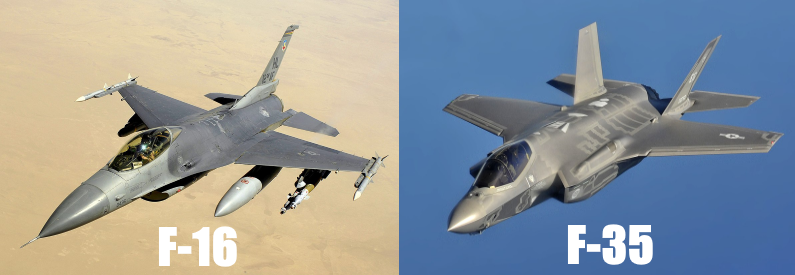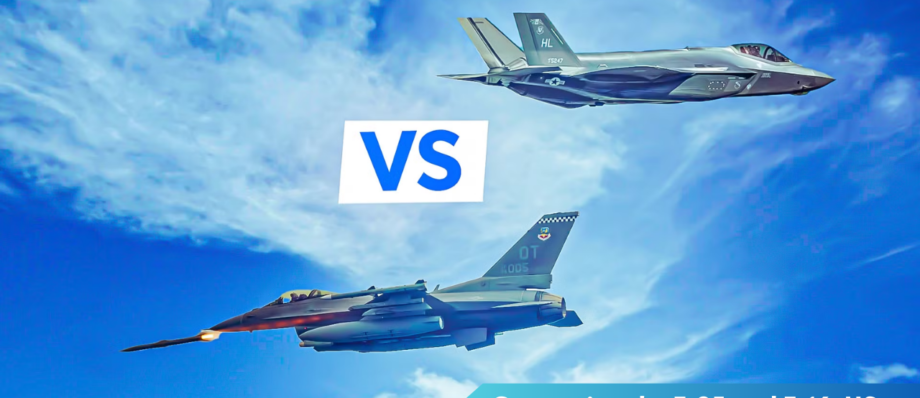Comparing the F-35 and F-16: US Jets in Focus
In the realm of modern military aviation, the United States has consistently remained at the forefront with its development of advanced fighter jets. Among these, the F-35 Lightning II and the F-16 Fighting Falcon stand out as iconic symbols of American air superiority. While both aircraft have proven their worth in combat, they represent different generations of military technology and serve different roles within the U.S. Air Force. This article delves into the key distinctions between the F-35 and the F-16, examining their performance, capabilities, and contributions to modern combat.
F-35 vs. F-16: Key Differences in Modern Combat

The F-35 Lightning II is a fifth-generation multirole fighter jet, designed to perform ground attack, reconnaissance, and air defense missions. It boasts stealth technology, which allows it to evade radar detection, giving it a significant edge in modern combat scenarios. The F-35 is also equipped with advanced sensors and systems that provide unparalleled situational awareness and information sharing capabilities. This network-centric approach allows the F-35 to operate as a force multiplier in joint operations, coordinating with other assets to achieve strategic objectives.
In contrast, the F-16 Fighting Falcon, a fourth-generation fighter, has been a workhorse of the U.S. Air Force since its introduction in the late 1970s. Known for its agility and versatility, the F-16 is capable of performing a wide range of missions, from air superiority to close air support. While it lacks the stealth features of the F-35, the F-16 is renowned for its dogfighting prowess and proven track record in numerous conflicts. Its affordability and ease of maintenance have also contributed to its widespread use by various air forces around the world.
One of the most distinct differences between the two aircraft is their design philosophy. The F-35 was developed with a focus on multirole capabilities and interoperability among allied nations, leading to its adoption by several countries under the Joint Strike Fighter program. Conversely, the F-16 was initially designed as a lightweight, cost-effective air superiority fighter, which over time evolved into a multirole platform. While both jets are integral to the U.S. Air Force’s operations, their roles reflect the evolving nature of air combat and the diverse needs of military strategy.
Performance and Capabilities of US Fighter Jets

The F-35’s performance is characterized by its advanced avionics and stealth capabilities, which enable it to conduct missions with reduced risk of detection by enemy radar systems. Its integrated sensor suite, including the Distributed Aperture System (DAS) and Electro-Optical Targeting System (EOTS), provides pilots with a comprehensive view of the battlefield, enhancing decision-making and mission effectiveness. The F-35’s Pratt & Whitney F135 engine also offers impressive thrust, allowing it to reach speeds of Mach 1.6, although its design emphasizes stealth and versatility over raw speed.
The F-16, on the other hand, is celebrated for its impressive agility and speed, capable of reaching Mach 2.0. Its performance is bolstered by a powerful General Electric F110 engine or Pratt & Whitney F100 engine, depending on the variant. The F-16’s design prioritizes maneuverability, making it an exceptional dogfighter and a potent platform for air-to-air engagements. It is also equipped with a diverse array of weapons, including air-to-air missiles, bombs, and precision-guided munitions, allowing it to adapt to various combat scenarios.
Both aircraft excel in their respective domains, with the F-35 demonstrating superiority in stealth and network-centric warfare, while the F-16 continues to be a reliable and versatile fighter. The decision to deploy either aircraft often depends on the specific mission requirements and threat environment. As the U.S. Air Force continues to modernize its fleet, the complementary strengths of the F-35 and F-16 ensure a balanced approach to air power, maximizing their capabilities to address current and future challenges.
The comparison between the F-35 and F-16 highlights the evolution of military aviation technology and the strategic needs of modern combat. While the F-35 represents the cutting edge of stealth and integrated systems, the F-16 remains a formidable and cost-effective option for air forces worldwide. Together, these fighter jets underscore the United States’ commitment to maintaining air superiority and adapting to the dynamic landscape of global threats. As new technologies emerge and defense strategies evolve, the legacy of these aircraft will continue to shape the future of aerial warfare.



